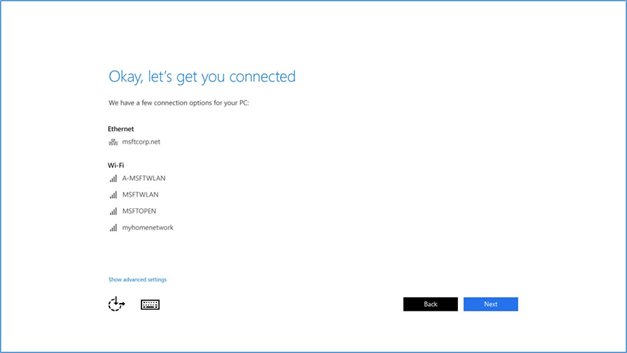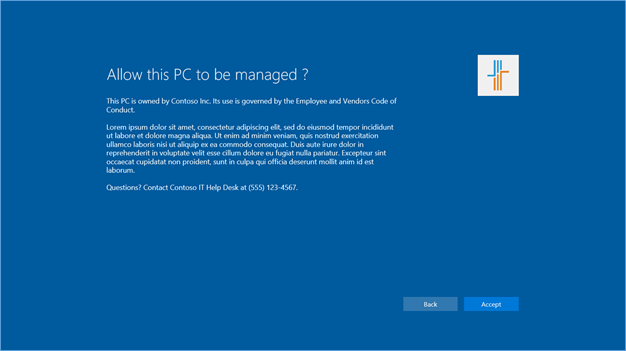First published on CloudBlogs on May, 13 2015
Howdy folks, Today's blog post is an exciting one – we're going to be covering the Azure AD support that will come built into Windows 10! There's a lot to cover and we've planned a series of engineering posts that will run for the next few weeks. To get started, let's talk about some of the major capabilities in Windows 10 that will be powered by Azure AD:
Howdy folks, Today's blog post is an exciting one – we're going to be covering the Azure AD support that will come built into Windows 10! There's a lot to cover and we've planned a series of engineering posts that will run for the next few weeks. To get started, let's talk about some of the major capabilities in Windows 10 that will be powered by Azure AD:
- Self-provisioning of corporate owned devices . With Windows 10, employees can configure a brand new device in the out-of-box experience, without IT involvement.
- Use existing organizational accounts. Employees can use their Azure AD account to login to Windows (the same account they use to sign into Office365).
- Automatic MDM enrollment . Windows 10 PC's and tablets can be automatically enrolled in an organizations device management solution as part of joining them to Azure AD. This will work with Microsoft Intune and with 3 rd party MDMs.
- Single Sign-On to company resources in the cloud . Users will get single sign-on from the Windows desktop to apps and resources in the cloud, such as Office 365 and thousands of business applications that rely on Azure AD for authentication.
- Single Sign-on on-premises: Windows 10 PC's and tablets that are joined to Azure AD will also provide SSO to on-premises resources when connect to the corporate network and from anywhere with the Azure AD Application Proxy .
- Enterprise-ready Windows store . The Windows Store will support app acquisition and licensing with Azure AD accounts. Organizations will be able to volume-license apps and make them available to the users in their organization.
- Support for modern form factors . Azure AD Join will work on devices that don't have the traditional domain join capabilities.
- OS State Roaming . Things like OS settings, Desktop wall paper, Tile configuration, websites and Wi-Fi passwords will be synchronized across corporate owned Azure AD joined devices.
Joining a device to Azure AD in the out-of-box experience
In Windows 10, end-users can join their device to Azure AD in the out-of-box experience (OOBE). This will allow organizations to distribute shrink-wrapped devices to their employees or students with no need to image or sys prep them ahead of time. (Note: we'll also support joining a device to Azure AD via Settings or with provisioning packages for people who are interested in that sort of thing). So how do you join a Windows 10 PC/Laptop/Tablet to Azure AD? Let me show you! The experience is pretty cool. Just like on Windows 8, users start by customizing their region and language, accepting the EULA and getting online:








What's next
In the next posts in this series, we'll share more details about SSO to enterprise resources, deployment considerations, MDM integration, Windows Hello and Passport integration, and more. We're looking forward to your feedback on these features. It's easy to download the Windows 10 Technical Preview or the Windows 10 Enterprise Technical Preview . Use the built-in feedback mechanisms, or feel free to use the space below to ask questions and let us know which other topics you want us to cover. And if you're a member of the Azure AD Advisors group, please join the conversation on Yammer. Thanks for your time and I hope you'll start joining Windows 10 PC's to Azure AD with great abandon! Regards, Ariel Gordon (Twitter: @askariel ) Principal PM Microsoft Identity and Security Services DivisionPublished Sep 07, 2018
Version 1.0Alex_Simons Microsoft
Microsoft
 Microsoft
MicrosoftJoined May 01, 2017
Microsoft Entra Blog
Stay informed on how to secure access for any identity to any resource, anywhere, with comprehensive identity and network access solutions powered by AI.